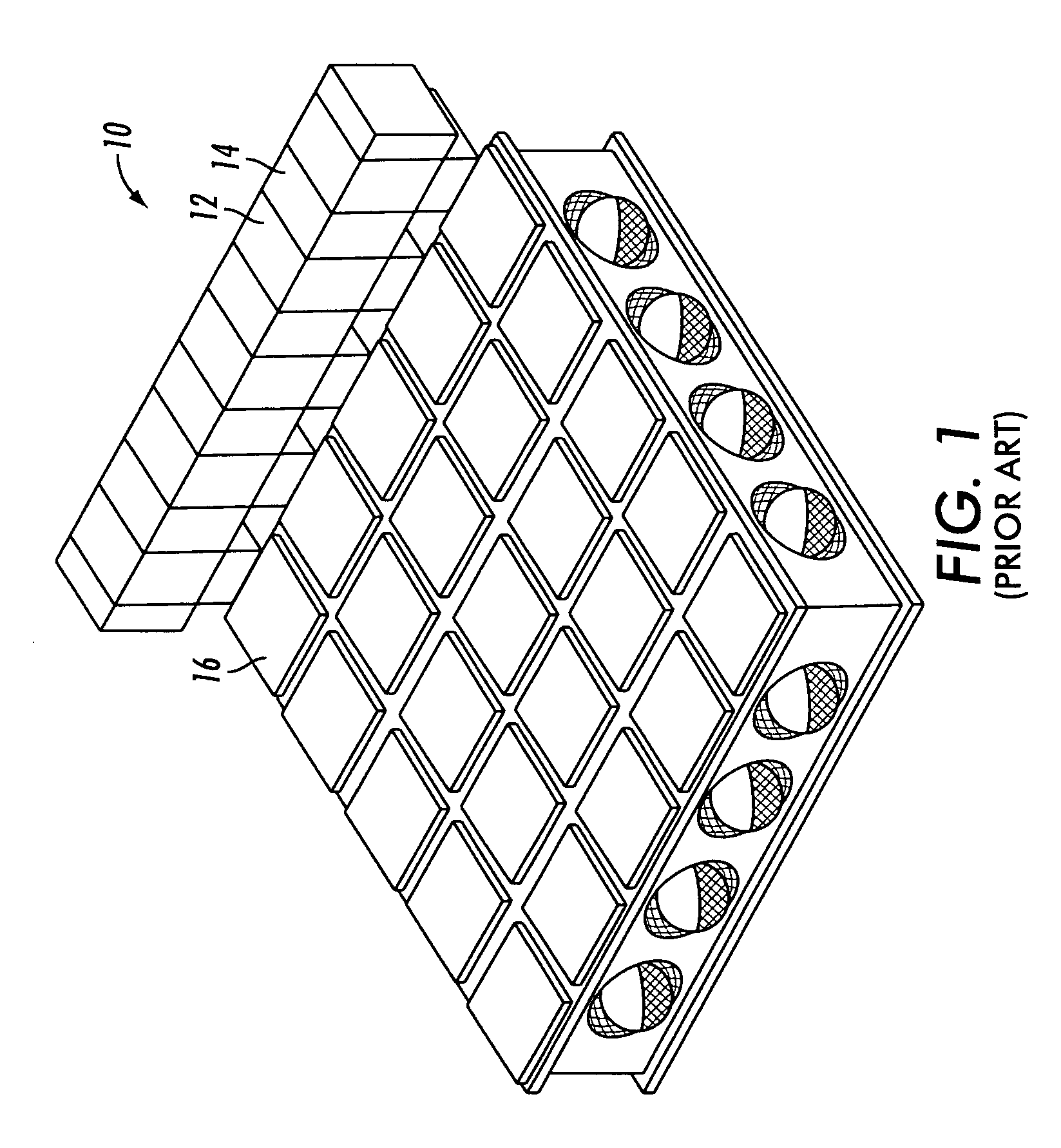Addressable brush contact array
- Summary
- Abstract
- Description
- Claims
- Application Information
AI Technical Summary
Benefits of technology
Problems solved by technology
Method used
Image
Examples
Embodiment Construction
[0031] The addressable brush contact array described herein involves the use of oriented conductive fibers attached to addressing electrodes to transfer imagewise charge to or from an array of individual electrodes on a two-dimensional surface (The charge retention electrodes). The two-dimensional surface can be the writing surface of an electronic paper display or the drum of a xerographic printer.
[0032] With reference now to FIG. 2, an addressable brush contact array 100 is shown. The array 100 comprises one or more linear rows 102 of addressing electrodes that can be mounted on a narrow wand or addressing bar (not shown). If there is more than one row of electrodes, then the electrodes of each row would be staggered with respect to the electrodes of adjacent rows to enable a high fill of charge transfer without creating fabrication problems by spacing the fibers too close on adjacent electrodes.
[0033] Thus, the brush contact array 100 may be thought of as a brush made with rows...
PUM
 Login to View More
Login to View More Abstract
Description
Claims
Application Information
 Login to View More
Login to View More - R&D
- Intellectual Property
- Life Sciences
- Materials
- Tech Scout
- Unparalleled Data Quality
- Higher Quality Content
- 60% Fewer Hallucinations
Browse by: Latest US Patents, China's latest patents, Technical Efficacy Thesaurus, Application Domain, Technology Topic, Popular Technical Reports.
© 2025 PatSnap. All rights reserved.Legal|Privacy policy|Modern Slavery Act Transparency Statement|Sitemap|About US| Contact US: help@patsnap.com



